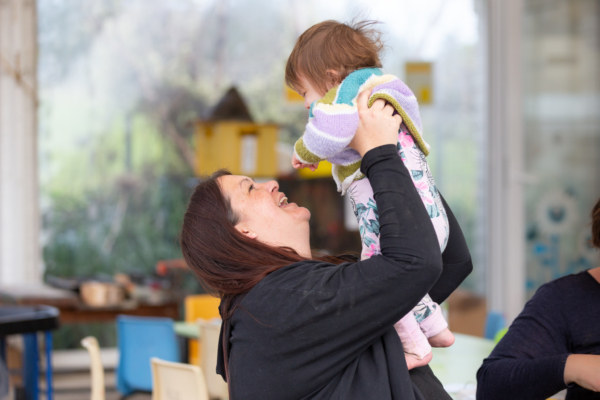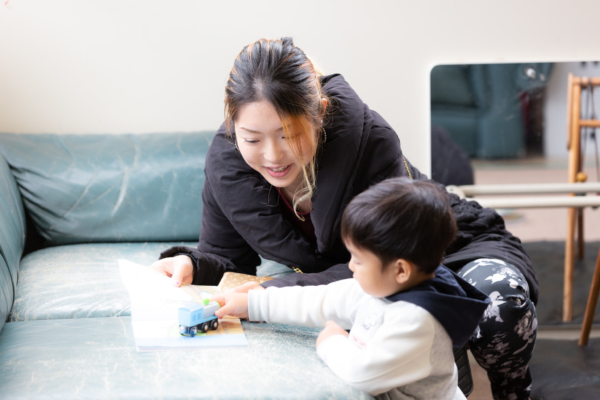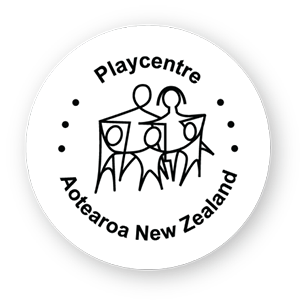The joy of going slow
The joy of going slow by Sarah Amy Glensor Best
Take a few moments, now. Yes … now. Slow each movement and thought down, including reading this line, and the next. Turn your head slowly, lower your eyes then raise them gently again, ease your breath. Let your shoulders relax.
Stop. Wait. Pause for three long breaths.
In that twinkling of stillness magic can happen. Our body receives a much needed reprieve from our usual frenetic pace. The brain stem’s stress response is momentarily soothed. A reset can occur. Creative doors can open. The impossible can become possible. Slowing down is the key to creating a state of mindfulness, and mindfulness helps us to generate insights which can greatly enrich our experience of life.
Now imagine extending that tiny two-line practice out through your day: She awakens. She smiles. She breathes in and out slowly with her eyes closed. She eases them open. A new day has dawned. Beauty and opportunities await. But first she must pause and acknowledge that this new day is here. Gratitude washes over her.
He comes in yawning. ‘Ata marie. Good morning my darling one.’ Ahhh, cuddle time. Together they get out of bed and help the younger dress. He sits and watches his Mummy have her shower and get dressed; sometimes looking at his book, sometimes gazing out of the window. Nowhere to be right now but here.
Mmmm, now they’re hungry. They walk to the kitchen to mindfully prepare and eat breakfast. The lunchbox is thoughtfully assembled. Messes are cleaned up slowly, with care. After softly doing hair and teeth they enjoy a long, cosy cuddle before heading off for the day… Sound glorious?
Yeah! You bet! But, seriously, this is completely out of my reach most days, isn’t it?!?
True, it’s not what happens most of the mornings I push through on auto pilot. I would really have to want to commit to this, I would need to see and appreciate the benefits of this calm, slow approach to starting the day. I would need to choose s-l-o-w. Choose mindfulness.
So much of our lives are spent on auto-pilot – the silent drudgery of day after day wearing out its welcome, or the frenetic pace generating unhelpful side effects in its wake. This isn’t really living people! OK, have you ever lost your keys because of being so focussed on the next job you were planning on doing? Yup, did that just a coupleof days ago. It took 20 monotonous minutes of searching before I found them dropped in a dark corner beside the rubbish bin. I was exhausted after that effort of retracing the rather less than conscious steps I’d made earlier.
We often hear: ‘It’s not what you said, it’s how you said it.’ Where communication is concerned that makes an enormous difference; the words making up a fairly small percentage of the overall message. It’s the same with how we choose to behave at any one moment: ‘It’s not what you do, it’s the way that you do it.’ Dr Libby’s book Rushing Women’s Syndrome introduces this concept well, arguing that it’s not always about doing less, however, rather choosing to mindfully undertake tasks one at a time that calms the rushing need. Personally, I find that when doing so mindfully I am actually more effective on the whole with my individual tasks while still completing the myriad expectations I’ve set out to achieve overall. What’s more, I’ve enjoyed the experience far more compared with attempting our standard women’s claim of being able to multi-task. Yes, perhaps we can be naturally somewhat more efficient at blending tasks than men, or are we just kidding ourselves and stressing our brains and other people out in the process? I’m beginning to suspect the latter.

These days, being a ‘Super Mum’ means ‘doing everything’. However, when we have many things on the go at the same time, with never a moment’s peace to allow us true respite from the ‘I need to do it’ onslaught, we put our brains and bodies in a state of stress. When our brain’s survival mechanism, our stress response, is activated over a long period of time we are at increased risk of health issues throughout our lives, we’re often not so fun to be around as we’re quicker to ‘snap’ and lose our temper and what about the modelling we’re doing for our children? They may subconsciously learn: ‘People are always busy and distracted, even when it hurts themselves and others.’ Hmmm… Many of us have forgotten the joys of going slow. In the day to day (feels like Groundhog Day sometimes) life of a young family, it’s easy to get lost in the tasks, lost in the worry, lost in the expectations and pressures of parenting, supporting the community and earning a living (though I urge you to take a moment to break down the meaning of that oft-used phrase…). When was the last time we stopped and stared out of a window or noticed the wind on our cheeks? When did we join our children lying on the grass and contemplating the heavens? Perhaps we’ve even told children off for being away in a daze: ‘Now you really must get back to the serious business of learning.
You can’t dream all day. We’ve got activities we need to get you to so you can learn!’ Yet do we really know what’s going through their minds when they pause or slow right down? It could be a mindful check in with their body, a consolidation of the day’s learning, an opportunity to rest their thoughts before moving on with the next experience… Learning and developing take many forms.
Downtime and slowly, consciously taking on tasks play important roles. How amazing would it be for our tamariki to realise during childhood that they have a say in how they live their lives: on auto-pilot or in a conscious manner? How beautiful the sound of a child externalising their choices of behaviour, of feelings, of thoughts and (eventually) recognising them as just that, a choice. This is part of the practice of mindfulness and mindfulness is the key to acknowledging, if not enjoying, each and every moment of our lives.

Mindfulness is created by a choice. As is going slow, which is the first step of this journey.
Like any habit change however, cultivating slow and mindful behaviours within your family takes time. Even once it’s part of our usual day it will still require regular nourishment to ensure it remains strong and resonant. What’s really super here is that our young tamariki will likely pick up and retain mindfulness as ‘just what we do’ much easier than us adults can. Our hard-wired brains take longer to adjust to change. However we do have the benefit of a stronger, more effective rational part of the brain. We can use this to remind ourselves why we’re attempting to make these mindful changes for ourselves and our family, and so keep us focussed. For the children, the fact that we’re practicing going slow around them, inviting them to join in and supporting their mindfulness journey makes it irresistible for them to take on (even if they say they’re not into it their brains are designed to adapt to their environment and so they can’t help but soak it into their being as an option for life). Of course, this is not to say that it’s easy. But let’s start with easy and work up.
First things first. Whatever you’re doing, feeling and thinking, it’s always possible to come back to the breath. Notice the air coming in and out of your body. Acknowledge that this act means you are in fact alive.
‘I am grateful for my breath. I am grateful for being alive.’ Bring this to the children’s attention. They may not have noticed it consciously before (or they may roll their eyes and wonder what sort of alien you are that you’ve not noticed you’re breathing and alive before!?!).
Next take on a task together that you’re doing, but do it in slow motion. Notice your breathing, notice the movements, the colours, the sounds, smells and feelings. Become aware of your intentions for doing this task. The old adage of ‘stop and smell the roses’ may come to mind as you remain aware of your surroundings while you engage in this task. Now for some fun. Try talking v-e-r-y s-l-o-w-l-y to each other. What does this feel and sound like? By all means giggle if the spirit moves you. Next, slow motion walking. How about slow motion changes of expressions on your face as you pretend to move from happy to angry or surprised. Can you guess what the other’s fantasy emotion is? Of course, tell them in slow motion. Ring a bell and listen together until the sound fades away completely. Perhaps use the bell as a signal: “Let’s pause and breathe three breaths together now.” Let’s take this outside – yes, people, raining or clear, morning or night. The world is waiting for us to notice, recognise and respond to its magnificence!
Dress as you wish, taking your slow, sweet time to mindfully don your shoes and coat. Then out we go. What do you see? What do you hear? What’s the first thing that captures your attention?
Glide towards it. Touch it, experience it mindfully, noticing all that is going on within your body. Cast your gaze further out to the world and smile as you breathe in the fresh, clean air we Kiwis are so lucky to have around us. Stretch out slowly, joyfully, feeling your muscles come alive as they’re activated. Notice, again, “I am alive.” Returning inside there will no doubt be things to do, places to be, people to help. Commit to doing each of these, mindfully, one at a time, highest priority first and see how this turns out. Notice whether you enjoy the task more, achieve it to a higher quality or whether there is stress at feeling you need to hurry up and get onto other things. Wherever you’re at is just fine. It’s the noticing of where you’re at that’s important. From there you can choose.
Choose to remember s-l-o-w.
Choose priorities for yourself, your relationships and the world.
Choose awareness.
Choose conscious parenting.
Choose mindfulness and create insights and transformation.
Choose to appreciate that everything a child is doing is learning of a sort.
Choose to acknowledge this very moment as the most important of moments for you, for others and the world.
Sarah Amy Glensor Best is the author of one of New Zealand’s newest and most Playcentre affirming parenting books:
“Changing the World is Child’s Play” published in 2015 by Ako Books. Sarah is a passionate believer in Playcentre. She also combines her knowledge and experiences as a Brainwave Trust Aotearoa Educator, with on the-job learning as a Mum of three children, to affirm parents in their role and inspire them to enjoy the precious times and everyday moments they spend with their children.

